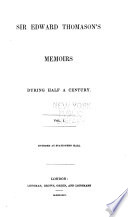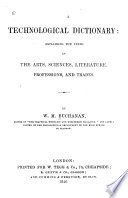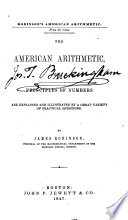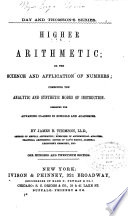 | Sir Edward Thomason - 1845 - 620 pages
...innumerable works written on these subjects into a small space, Mr. T. mentions the mechanical powers, the lever, the wheel and axle, the pulley, the inclined plane, the wedge and screw, the theory of friction, pressure, percussion, &c., and as much of their application to useful... | |
 | John Johnston - Physics - 1846 - 314 pages
...machines or instruments, with which we are accustomed to raise weights and overcome resistances. They are six in number, viz. the Lever, the Wheel and Axle, the Pulley, the Inclined Plane, the Wedge, Quest. 113. What are the mechanical powers? How many of them are there ? Does each one of these act... | |
 | John E. Fuller - Ready-reckoners - 1846 - 82 pages
...raise, through a less space, a weight heavier than itself. Power is gained at the expense of space, by the lever, the wheel and axle, the pulley, the inclined plane, the wedge, and the screw. LEVER. Case 1. — When the fulcrum of the lever is between the power and the weight. 66 of leverage... | |
 | Denison Olmsted - Physics - 1846 - 454 pages
...the Egyptians. The elements of machinery are found in what aie called the Meclumical Powers. They are six in number, viz. the Lever, the Wheel and Axle, the Pulley, the Inclined Plane, the Screw, and the Wedge. THE LEVEE. $ 117. The LEVER is an inflexible bar or rod, some point of which... | |
 | C. List - Physics - 1846 - 176 pages
...the elements of which the compound are composed. They appear in six different forms, which are called the Lever, the Wheel and Axle, the Pulley, the Inclined Plane, the Wedge, and the Screw. These are called the Mechanical Powers. We should be careful not to adopt the mistaken idea which is... | |
 | W. M. Buchanan - Science - 1846 - 768 pages
...constitutes the science of mechanics. The mechanical powers are usually divided into six classes ; the lever, the wheel and axle, the pulley, the inclined plane, the wedge, and the screw ; but all these are reducible to two, the lever and the inclined plane Some, however, regard the pulley... | |
 | James Robinson (of Boston.) - 1847 - 304 pages
...regulate moving power, or to produce motion so as to save time or force. The mechanical powers are six in number, viz. : the Lever, the Wheel and Axle,...Pulley, the Inclined Plane, the Wedge, and the Screw. The weight signifies the body to be moved, or the resistance to be overcome ; and the power is the... | |
 | Arithmetic - 1847 - 292 pages
...through all the points. MECHANICAL POWERS. The Mechanical Powers in common use are sjx in number ; the Lever, the Wheel and Axle, the Pulley, the Inclined Plane, the Wedge and the Screw. The Weight is the body to be moved ; the Power is the body that moves it ; and the fixed point, which... | |
 | Edward Cresy - 1847 - 912 pages
...and the several machines described for defence, show a thorough acquaintance with the properties of the lever, the wheel and axle, the pulley, the inclined plane, the wedge, and the screw ; and Euclid's Elements, collected about 280 years before Christ, for the instruction of the pupils... | |
 | James Bates Thomson - Arithmetic - 1847 - 432 pages
...the breadth 35 ft., and the depth 25 ft. ? MECHANICAL POWERS. 648. The Mecfianical powers are six, viz: the lever, the wheel and axle, the pulley, the inclined plane, the screw, and the wedge. 649. When the pmtxr and weight, act perpendicularly to the arms of a straight,... | |
| |